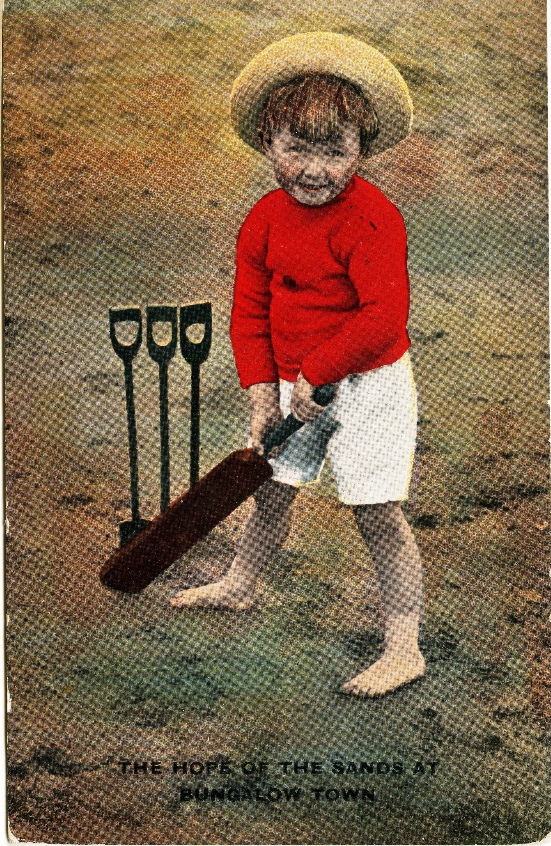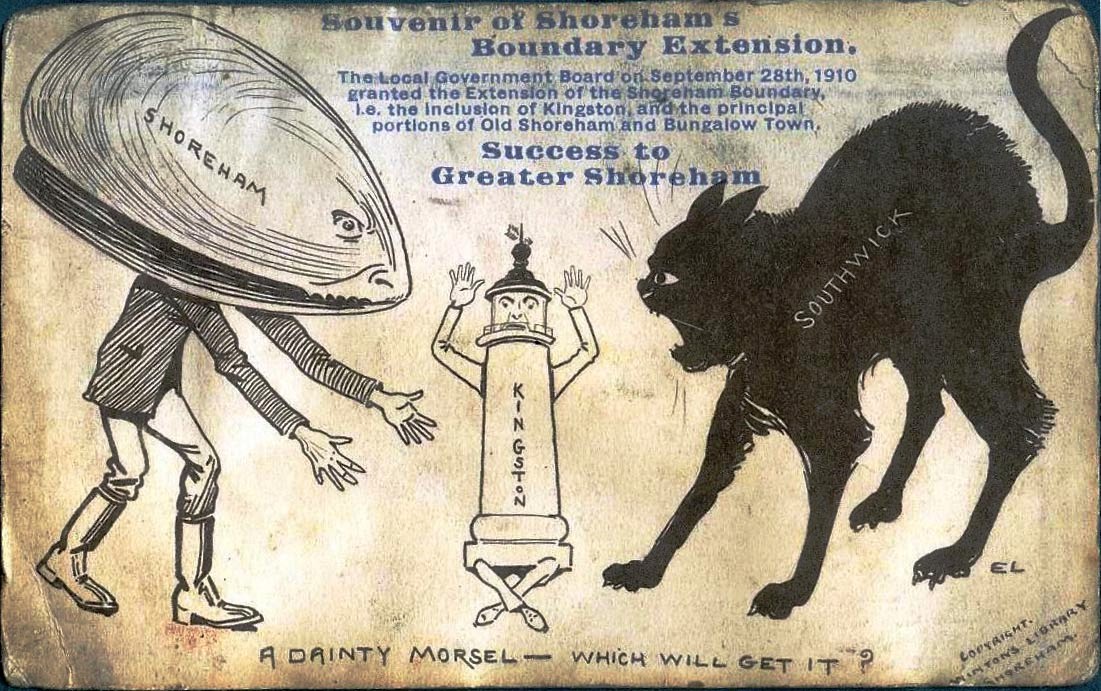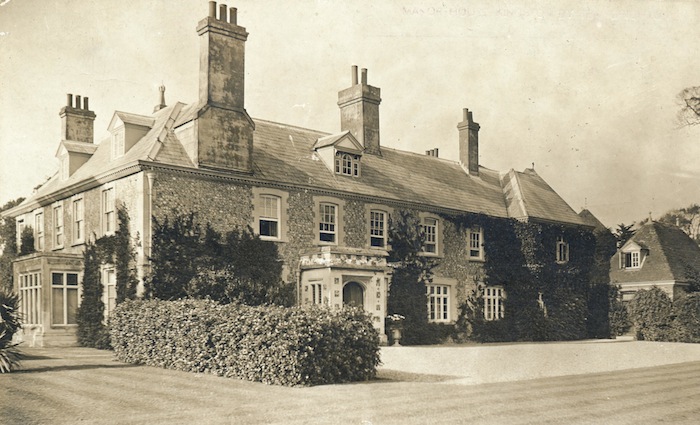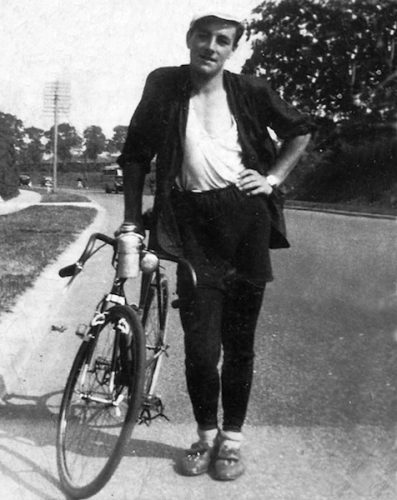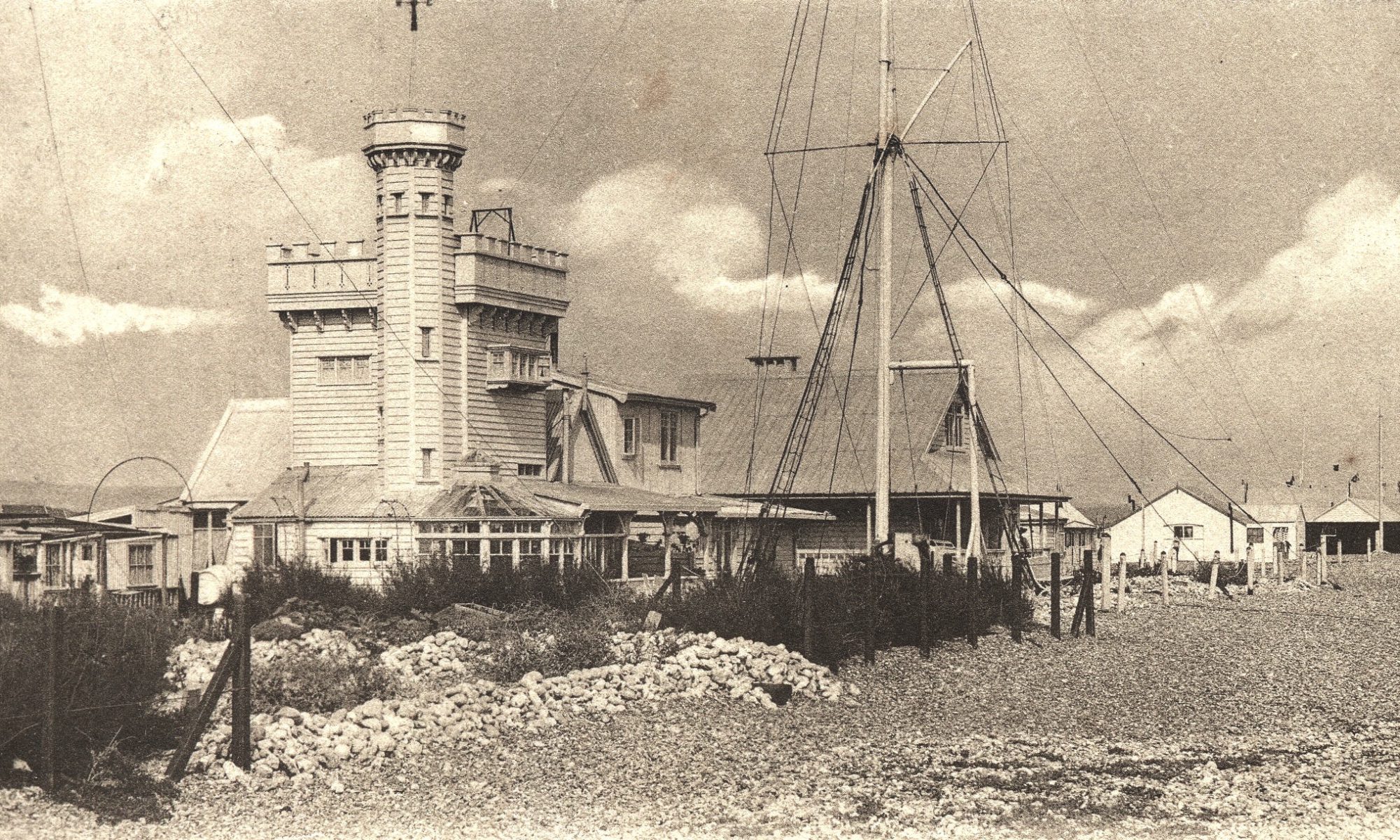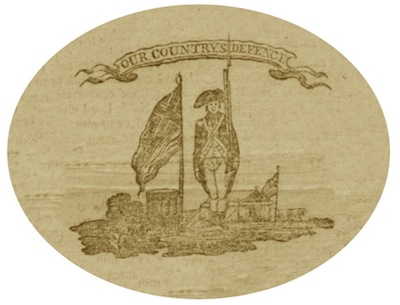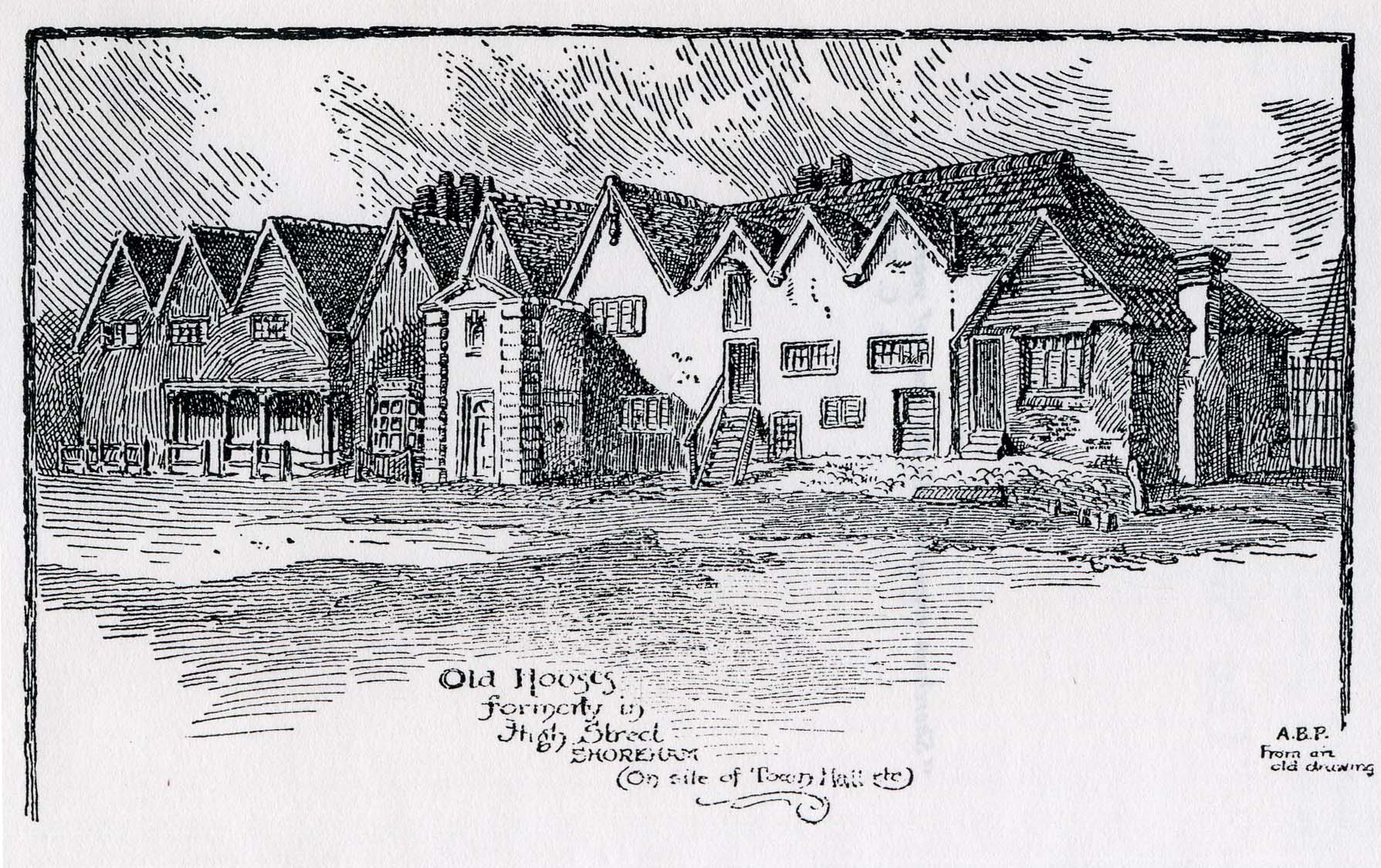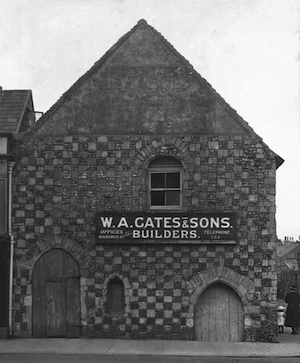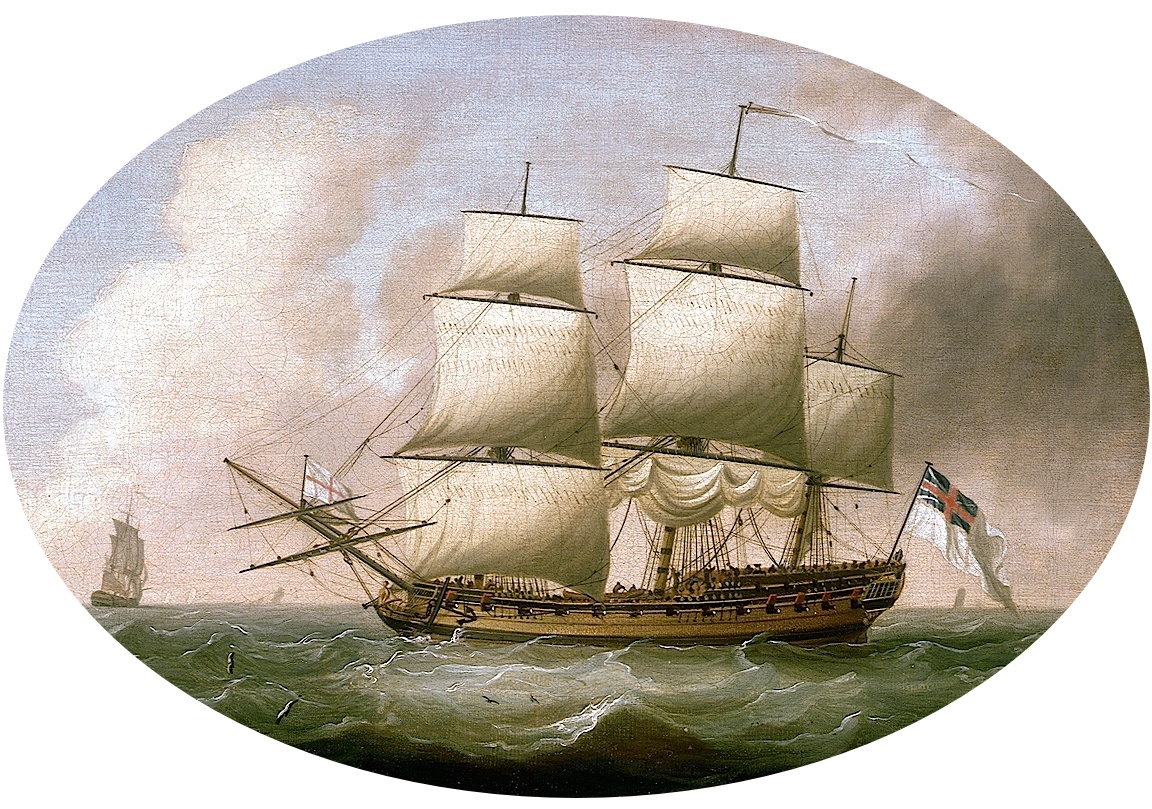Impressions of Shoreham and life 100 years ago by the writers of the old postcards
Shoreham’s early postcards were photographed and produced by a number of different people, the best known of them being W.Page of East Street, William Winton and his son who produced his cards at their printing works in Middle Street and sold them from their shops in the High Street and Brunswick Road, and Frank Rowe who developed and printed his photographs in the cellars of his shop at 18, High Street. Most people looking through collections of old postcards are attracted by the photo or view shown on the fronts – some however are equally interested in the messages on the reverse.
Continue reading “Tales from the Postcards”

